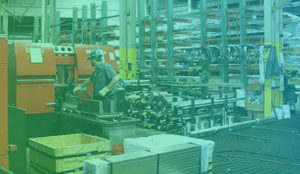Starting a new product is never simple, especially when you’re trying to decide what needs to go into the release version. Building the perfect balance between a bill of material (BOM) vs COGS is always a challenge. So how do you know you’ve reached that fine line? How do you do it?
Let’s dive-in and work this one out.
What is a BOM?
A BOM (or bill of materials) makes up the fabric of your product. This is a list of all the components, materials, and anything that makes up your physical product. There is a trade-off between lowering the BOM cost and risk of quality issues.
What makes a quality BOM?
There is no easy answer to this question as everyone’s product will have different features. It should include the production costs, marketing costs, software costs, logistics, and distribution per unit.Thus having a low BOM cost is crucial when looking to scale. We would suggest your BOM cost be no more than 30% of your RRP (recommended retail price).
Is a $2/unit BOM reduction worth $500k in engineering services?
Let’s be realistic you are a startup with limited money you’re going to think twice before investing over $500k USD towards an engineering service. However, when has engineering ever been cheap?! More often or not that $2 you saved after spending $500k could potentially be your lifesaver in the future.
Let us explain
You went through an accelerator and your BOM cost is now $52 USD/unit. The quality/supply-chain is questionable, but you need this product on the market asap. Your backers are requesting those first 10,000 units! So you begin mass producing at a total material cost of $52,000.
Fast forward a year later. Your first 10,000 units were a success and now you need to sustain a production of 100,000 units/month. Based on your original BOM, you’re now spending $520,000/month on components for the products alone. Your investors are asking to lower this burn rate. Afterall, a “simple” reduction in the BOM cost by $2 will reduce your monthly costs by $200,000. But this isn’t so simple since you’re already well into production. The stress builds until the products second version when you can redesign your BOM for maximum efficiency.
For V2, you decide to partner with an engineering firm who minimizes your BOM’s cost by that $2 your board so eagerly asked for. Yes it cost $500,000 in fees, but in reality that’s only 2-3 SF-level engineering salaries anyway. And what was the result? A new mass production cost of only $320,000/month for 100,000 units. That’s $2.4M/year in savings! An ROI of almost $2M/year, or 3,800%. This is a return you and your investors are, and definitely will be proud of.
So as you can see, with manufacturing it’s important to engineer the product correctly upfront. It’s a waterfall process where preventing issues upfront can (re)solve your long-term problems.
This is food for thought. As a founder, you must predict and plan for these tiny details which could impact your company significantly. Don’t be afraid to spend money on your engineering. Just ensure you’re engineering with the right partner. For every $1 USD shaved off from your BOM could potentially be an extra year of a sustained business.
Written by: Frederick Bravey & Karen Nemeth





